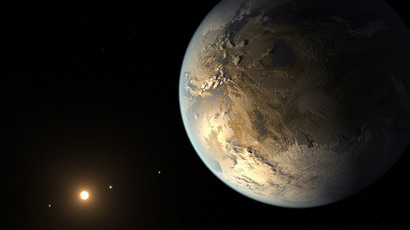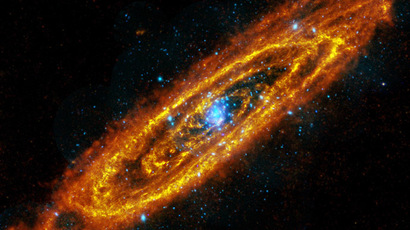Universal crisis: 80 percent of light in space is missing, scientists say

Scientists now believe that a tremendous amount of light that would otherwise be illuminating our universe is mysteriously absent.
How much light exactly? According to new research conducted by a team of international scientists and funded in part by NASA, the National Science Foundation and the Ahmanson Foundation, around 80 percent of the universe’s light is nowhere to be found.
“It’s as if you’re in a big, brightly lit room, but you look around and see only a few 40-watt lightbulbs,” astronomer Juna Kollmeier — a Carnegie Institution for Science professor and the lead author of the new study on missing light said in a statement this week. “Where is all that light coming from? It’s missing from our census.”
Kollmeier and company have published their research in the latest edition of The Astrophysical Journal Letters, and there they explain further why they have reason to believe that the universe is missing around 400 percent of its light.
Along with Benjamin Oppenheimer and Charles Danforth of CU-Boulder’s Center for Astrophysics and Space Astronomy, Kollmeier reported that the amount of light that should be emitted from ionized tendrils of hydrogen in the universe is only a fraction of what it should be.
“Something is amiss in the universe,” they write. “There appears to be an enormous deficit of ultraviolet light in the cosmic budget.”
On the website Universe Today, contributor Shannon Hall explains:
“The vast reaches of empty space are bridged by filaments of hydrogen and helium. But there’s a disconnect between how bright the large-scale structure of the universe is expected to be and how bright it actually is,” Hall wrote. “In a brightly lit universe, intergalactic hydrogen will be easily destroyed by energetic photon, meaning images of the large-scale structure will actually appear dimmer. Whereas in a dim universe, there are fewer photons to destroy the intergalactic hydrogen and images will appear brighter.”
When Kollmeier and company used Hubble Space Telescope observations to look at the universe, however, their observations contrasted sharply with supercomputer simulations.
“Either our accounting of the light from galaxies and quasars is very far off, or there’s some other major source of ionizing photons that we’ve never recognized,” Kollmeier wrote in her report.
According to the group, this missing light phenomenon is now being dubbed the “photon underproduction crisis.” Even if the researchers want to call it a crisis, though, they nevertheless believe that they are only just now learning to make sense of the situation.”
“We are calling this missing light the photon underproduction crisis. But it’s the astronomers who are in crisis -- somehow or other, the universe is getting along just fine,” explained Kollmeier.
"The great thing about a 400 percent discrepancy is that you know something is really wrong," responded co-author David Weinberg of The Ohio State University. "We still don't know for sure what it is, but at least one thing we thought we knew about the present day universe isn't true."














